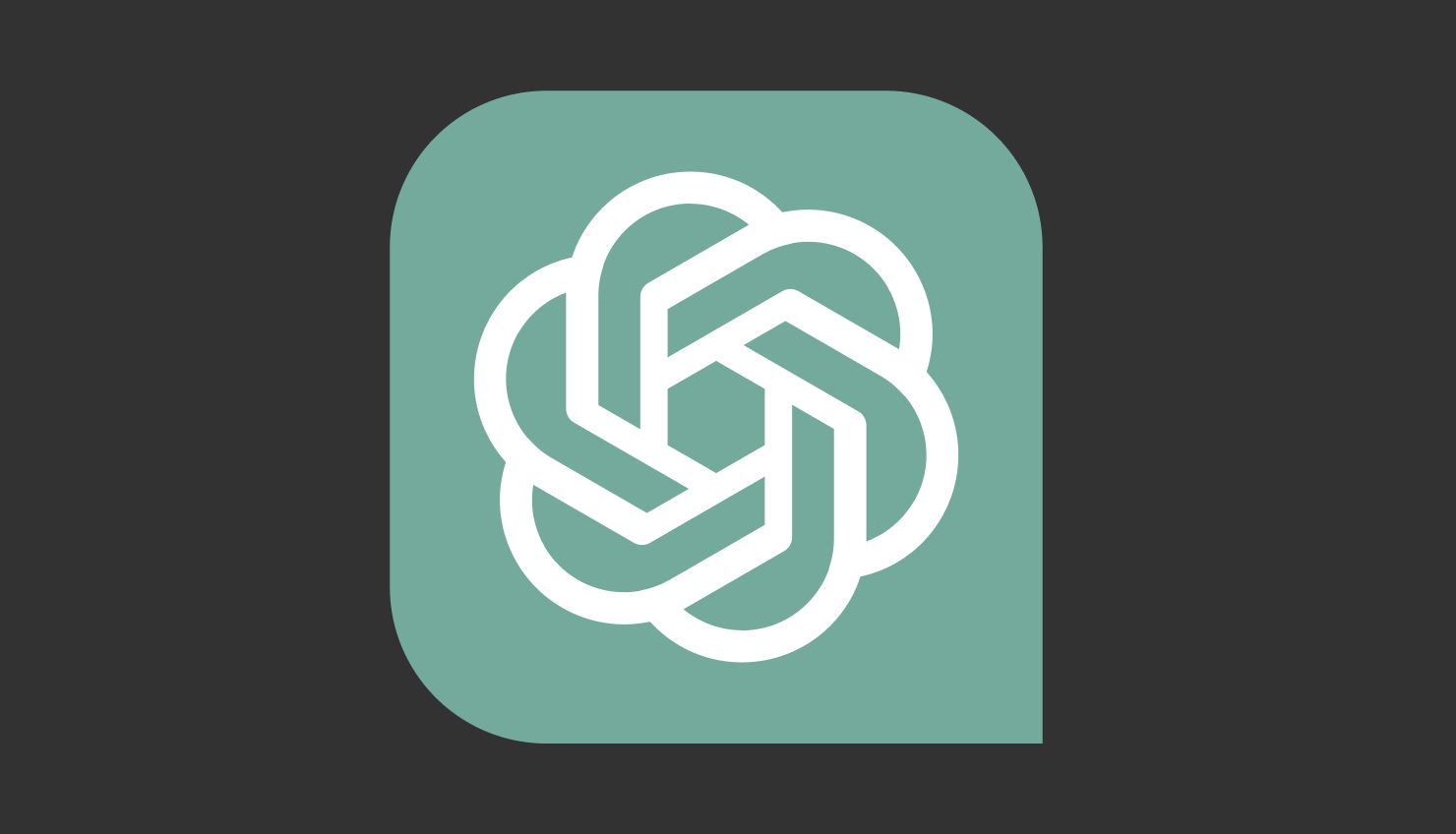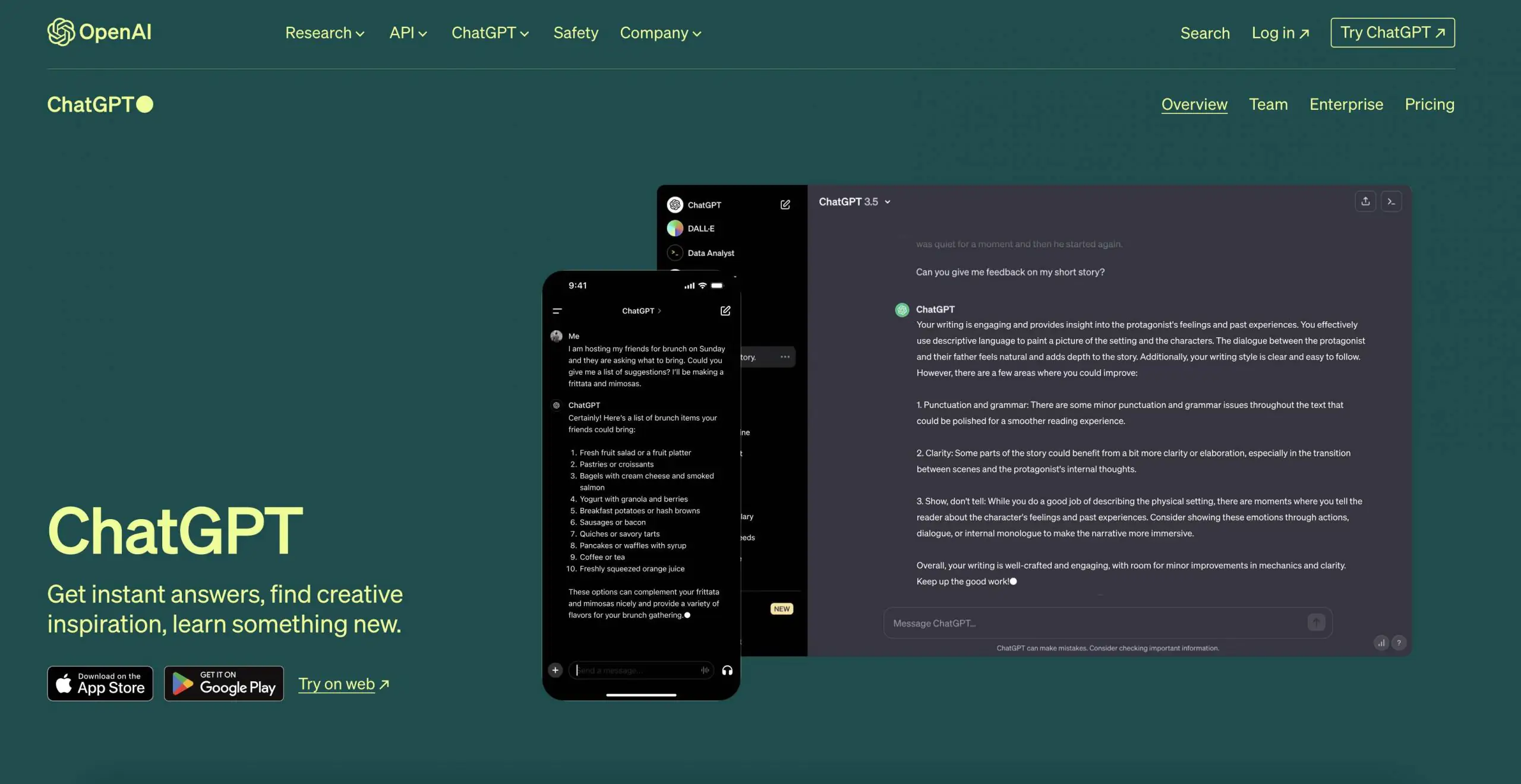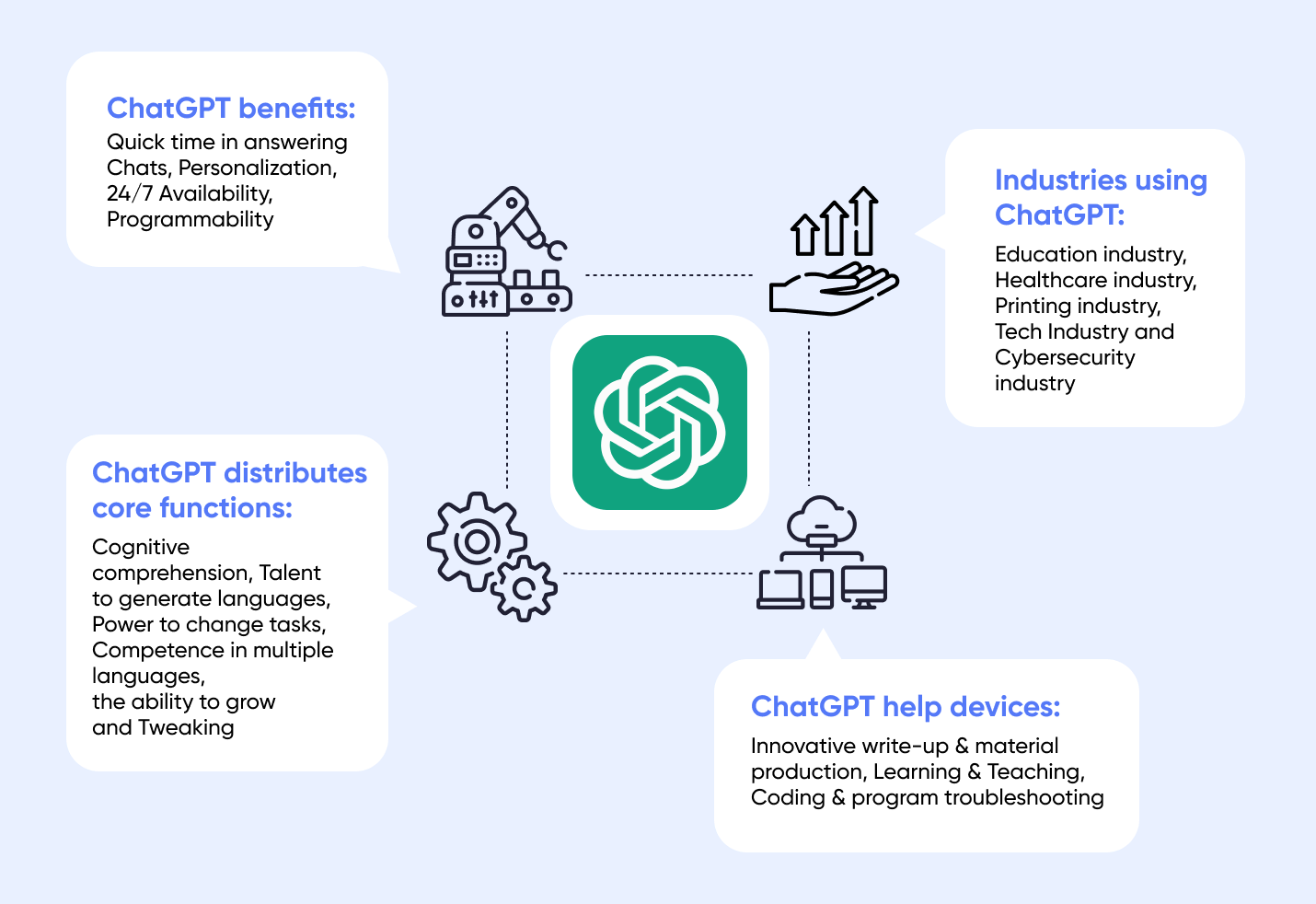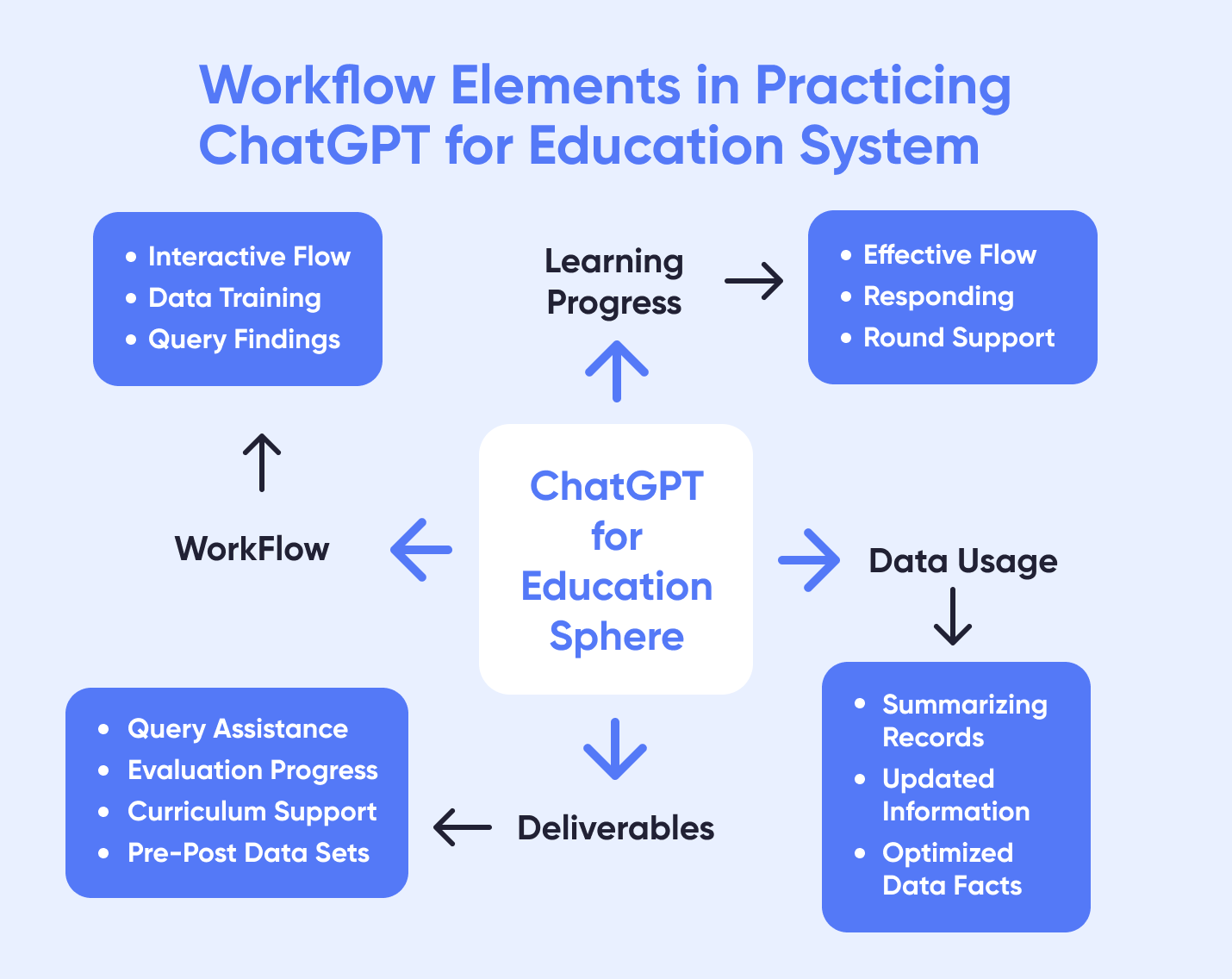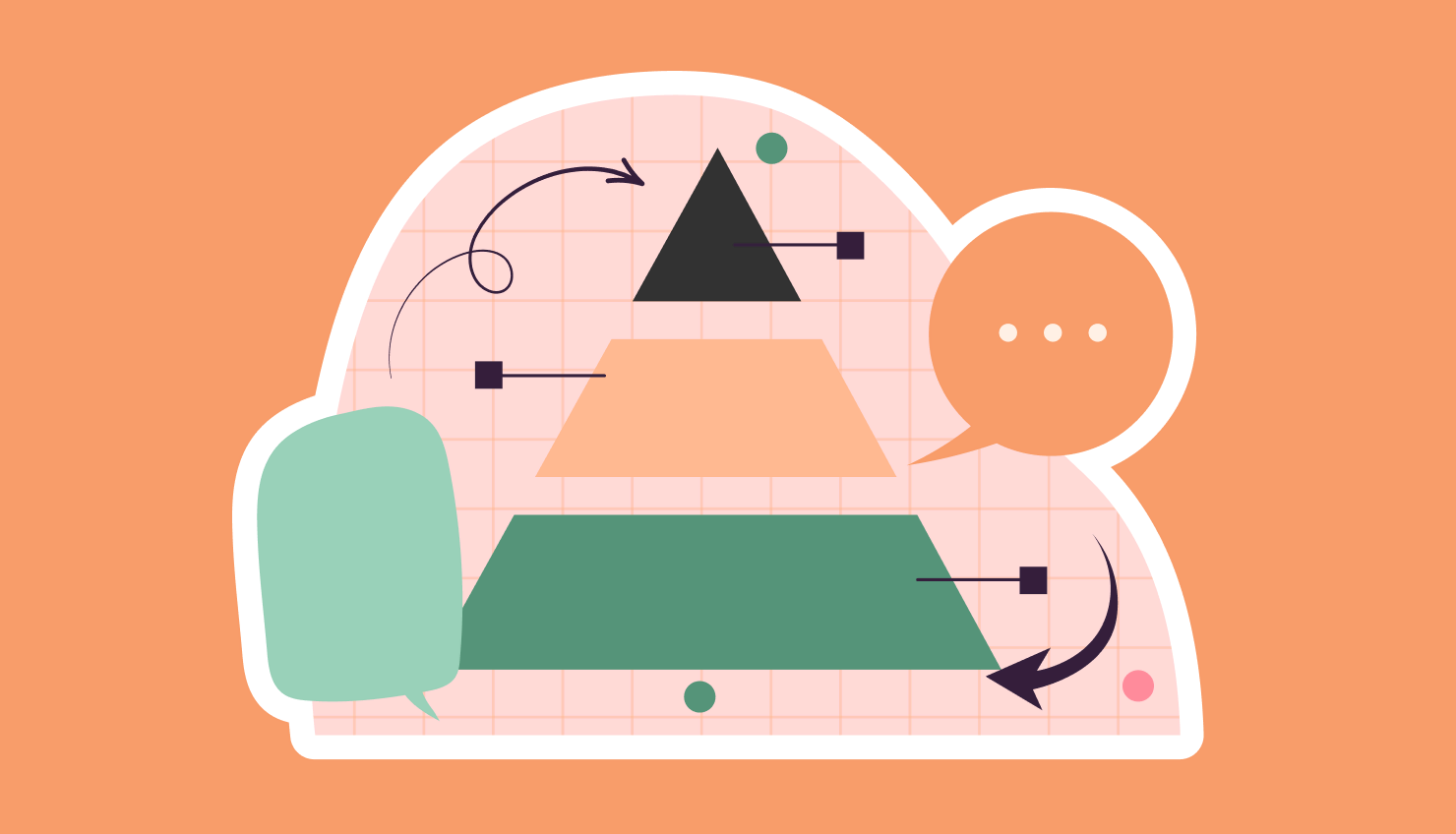Introduction: ChatGPT’s Place in Modern Education
Welcome to the future of education, where ChatGPT stands as the main constellation of the learning space. Join us as we embark on a journey through uncharted territories, where the blend of Conversational AI’s capabilities sparks both limitless possibilities and, perhaps, a few apprehensions. As we navigate the stars of educational innovation, we’ll delve into the predictions shaping the near future of educational work, exploring the potential and addressing the concerns that orbit this celestial force.
What is ChatGPT?
ChatGPT is a cutting-edge language model designed to understand and generate human-like text based on the input it receives. Developed by OpenAI, this advanced technology supports deep learning to process and generate contextually relevant responses, making it a versatile tool in various applications, including education.
Understanding ChatGPT
Understanding how ChatGPT works is essential to comprehend its impact. At its core, Artificial intelligence (AI) employs a transformer-based architecture, allowing it to analyze and predict patterns in data with remarkable accuracy. Harnessing this capability enables the understanding and response to user inputs, creating a conversational experience that feels remarkably natural.
Capabilities: What Can ChatGPT Do?
ChatGPT boasts many capabilities. Its applications are diverse and impactful, from aiding in content creation to providing instant feedback and facilitating interactive learning.
Beyond Basics: Advanced Functions of ChatGPT
While the Language Model excels at the fundamentals of natural language processing, its prowess extends to more advanced functions:
- Curriculum Development Assistance.
- Creative Writing Prompt Generation.
- Simulating Dialogues for Language Learning.
This versatility positions Conversational AI as an invaluable asset for educators seeking to innovate within their teaching methodologies.
Limitations: What ChatGPT Cannot Do (Yet)
As powerful as ChatGPT is, it’s important to acknowledge its limitations. Understanding these limitations is crucial for adopting AI Assistants in an educational setting.
- Struggles with nuanced or highly specialized topics.
- Lacks real-time learning capabilities, leading to potential delays in adapting to evolving contexts.
Stay tuned as we further explore the practical applications of ChatGPT in education and provide insights into how it can be integrated into your teaching or learning environment. In the next sections, we’ll delve into specific use cases, tips for optimizing its performance, and considerations for maximizing its benefits.
Using ChatGPT as a Learning Tool
ChatGPT performs as a universal learning tool for teachers and students, improving traditional educational approaches. Teachers can implement AI Assistants to aid in content creation, generating lesson plans and quizzes, and engaging learning materials. For students, interacting with Language Model can enhance language skills, as they engage in conversational exercises. Additionally, educators can adopt the model to simulate historical figures or literary characters, bringing lessons to life through interactive conversations.
Aligning ChatGPT with Course Goals
Aligning ChatGPT with course goals requires a thoughtful integration strategy. For instructors or course owners, this involves identifying specific learning outcomes and tailoring Conversational AI’s functionalities to meet those objectives. If the course aims to enhance writing skills, Artificial intelligence can be used to provide personalized writing prompts and constructive feedback.
Fostering Critical Thinking with ChatGPT
Through open-ended dialogues, students can engage in discussions that challenge their perspectives, fostering a habit of thoughtful inquiry. For example, the Language Model can prompt discussions on alternative plot outcomes or character motivations in a literature class, prompting students to think beyond the obvious. By presenting diverse viewpoints and encouraging analysis, ChatGPT becomes a valuable companion in cultivating critical thinking skills essential for academic success and real-world problem-solving.
Cons of Using ChatGPT: Things to Be Aware Of
While ChatGPT offers immense potential, it’s crucial to be aware of certain drawbacks. These include limitations in contextual understanding, potential biases in generated content, and the need for vigilant oversight to ensure the appropriateness of responses. Educators must be cautious about over-reliance on Conversational AI, particularly in specialized subjects where nuanced understanding is critical. Additionally, privacy and data security considerations must be considered when integrating AI tools into the learning environment.
Setting and Communicating Clear Expectations
It’s essential to perceive Conversational AI as a tool, not a replacement for human expertise. Communicate to educators that ChatGPT is here to assist, not to overshadow their role. By setting clear expectations, educators can understand that AI Assistant’s effectiveness depends on how it is wielded. It is a collaborative partnership where educators guide and refine the AI’s contributions. This tool is only as good as the input and guidance it receives, placing educators in control of the learning experience.
Practical Application: Trying Out ChatGPT in the Classroom
- Interactive Storytelling: Incorporate ChatGPT into a language arts class, where students collaboratively create a story. Each student contributes a sentence, and the Language Model responds with a continuation, fostering creativity and collaboration.
- Historical Figure Dialogue: In a history class, use AI Assistant to simulate a dialogue with a historical figure. Students can ask questions, and the AI responds as if embodying the persona, offering insights into the historical context.
- Scientific Scenario Simulation: Bring science to life by using ChatGPT to simulate a scenario. For example, in a biology class, students can interact with AI Assistant
to discuss hypothetical ecological challenges and brainstorm solutions, promoting critical thinking and problem-solving skills.
The Future of Education with ChatGPT
In considering the future of education with ChatGPT, we recognize significant challenges, taken from our deep understanding of Artificial intelligence and expertise in the educational sector. Prohibiting or restricting ChatGPT is not the solution; instead, it calls for embracing it with explicit guidelines for its application in academic settings.
The New Education Paradigm
We anticipate that the future of learning will pivot towards the human components of the process, relying more on AI technologies. This shift aims to automate tasks such as study instructions, concept descriptions, and practice exams. With Conversational AI properly, educators and students can embrace more comprehensive teaching and assessment strategies, including project-oriented, inquiry-based, cooperative, personalized, or multidisciplinary education. The ultimate goal is to move away from rote memorization towards developing durable skills essential for futuristic humanity.
Made-to-Measure Learning with ChatGPT
In the era of personalized education, AI companions act as tailor-made assistants, crafting individualized learning experiences. For instance, a history student researching a specific era may use advanced ai chatbot technology to generate detailed summaries or answer nuanced questions, aiding in comprehensive understanding.
Similarly, in language learning, AI can serve as a language partner. ChatGPT engages in dialogues, helping learners practice conversational skills and receive instant feedback. This real-time interaction contributes to language fluency, adapting to the learner’s pace and addressing specific challenges.
However, challenges may arise in scenarios where artificial intelligence lacks context or misunderstands subtle cues. In language learning, idiomatic expressions or cultural nuances may be tricky for AI to grasp accurately. Additionally, without human intervention, emotional intelligence remains a hurdle. Recognizing and addressing a student’s frustration or confusion may be beyond the capabilities of current AI systems.
Role of Faculty in the ChatGPT Era
- Partner, Not a Replacement: Conversational AI enhances the faculty’s impact without replacing them, serving as a powerful partner in various crucial ways.
- Transformed Role of Faculty: The faculty’s role evolves into that of a mentor, focusing on providing insightful feedback and fostering creativity. Educators transition from mundane tasks to conductors of dynamic lessons.
- ChatGPT’s Handling of Groundwork: AI Assistant takes on groundwork tasks, such as generating scenarios and facilitating interactive learning, allowing faculty members to curate a comprehensive learning experience.
- Preserving Emotional Support and Mentorship: ChatGPT doesn’t replace the faculty’s role in providing emotional support and mentorship. Faculty members remain indispensable for understanding students’ emotional states and adapting teaching methods based on individual needs—capabilities beyond AI.
- Irreplaceable Faculty Expertise: The faculty’s expertise, creativity, and mentorship remain irreplaceable. The AI era focuses on empowering educators to redefine the art of teaching, not replacing them.
How Can Educators Complement ChatGPT?
Prominent educational figures have acknowledged educators’ potential to complement ChatGPT, emphasizing the collaborative partnership between human expertise and artificial intelligence. Here are statements from education leaders supporting this idea:
What are ChatGPT’s capabilities and limitations in education?
- The model showcases versatility from text completion, paraphrasing, and summarization to machine translation and question-answering. It extends its utility to conversational AI applications like chatbots and virtual assistants. Notably, the model demonstrates promising success in code writing.
How can universities address ChatGPT’s impact on learning outcomes?
- In the short term, departments and instructors must assess the influence of Conversational AI on achieving learning outcomes. If it poses a risk to genuine learning, instructors should devise “ChatGPT-proof” assessments to help students build new skills. Banning or preventing its use proves impractical; instead, universities should anticipate AI tools’ permanence, emphasizing adaptation across disciplines.
In what ways can ChatGPT enhance the classroom experience and education?
- Despite concerns about academic assessment compromise, ChatGPT and improved versions prompt a shift towards higher levels of critical thinking in the curriculum. Beyond these concerns, opportunities arise for enhancing the learning process. Chatbots could support students in menial educational tasks, allowing instructors to focus on advanced aspects. Experimentation with project-based learning and personalized assessment using technology offers potential avenues for impactful integration into the educational landscape. Customizing learning processes may emerge as a key strategy to better match the diverse needs of the student body.
Strategies for Faculty to Maximize ChatGPT’s Potential
- Incorporate AI Assistant into Advanced Tasks: Adopt ChatGPT to assist students in tackling more advanced aspects of their coursework, allowing faculty to focus on critical thinking and higher-level educational objectives.
- Experiment with Project-Based Learning: Integrate the Language Model into project-based learning initiatives, where the chatbot can be used as a brainstorming tool. This collaborative approach encourages creative thinking and engagement.
- Customize Assessment: Tailor assignments or quizzes to better match individual students’ learning needs and styles, promoting a diversified and inclusive learning experience.
- Evaluate AI-Proof Assessments: Assess the vulnerability of traditional assessments to Conversational AI’s capabilities. Develop assessments that require critical thinking and higher-order skills, making it challenging for ChatGPT to replace genuine student learning.
- Incorporate ChatGPT into Conversational AI Applications: Explore the use of the model in creating conversational AI applications within the classroom. This could include developing chatbots or virtual assistants that enhance student engagement and provide additional support.
- Shift Curriculum Toward Higher Critical Thinking Levels: Recognize that AI tools may encourage a shift in the curriculum towards higher levels of critical thinking. Consider adapting teaching methods to align with this shift, ensuring that learning outcomes remain robust.
- Use ChatGPT for Text-Generation Tasks: Capitalize on ChatGPT’s proficiency in text generation for tasks such as text completion, paraphrasing, text summarization, machine translation, and question-answering. This can streamline administrative and communication processes.
- Emphasize the Value of Human Expertise: Reinforce the value of human expertise and mentorship in education. Highlight that while AI Assistant can help with certain tasks, the irreplaceable aspects of emotional support, mentorship, and nuanced understanding remain crucial for a complete learning atmosphere.
Conclusion
AI is no longer a distant concept but an integral part of students’ lives, particularly for those who have grown up with technological marvels from the beginning of their educational journey. As we reflect on this transformation, it becomes evident that the educational experience for these students diverges significantly from that of their peers just a decade ago.
Advice to Students
For students navigating this AI-infused educational era, embracing technology is not merely an option but a necessity. Familiarity with tools like Conversational AI opens doors to a learning experience tailored to individual needs. Here’s some advice:
- Embrace Technological Literacy: Understand the capabilities and limitations of AI tools, enabling you to use them effectively.
- Balance AI Assistance with Personal Growth: Use AI tools as aids, not substitutes. While artificial intelligence can streamline tasks, focus on developing essential skills like critical thinking, creativity, and emotional intelligence that AI cannot replicate.
- Seek Collaborative Learning Opportunities: Adopt tools like Conversational AI to enhance group projects, discussions, and creative endeavors, fostering a synergistic relationship between human intelligence and artificial assistance.
Advice to Educators
For educators, the integration of AI presents both opportunities and challenges. Navigating this landscape requires a strategic approach to maximize the benefits while preserving the essence of human-driven education. Here are some guiding principles:
- Empower Students with AI Literacy: Equip them with the skills to navigate and harness the potential of AI tools, ensuring they are well-prepared for the technology-driven future.
- Redesign Assessments for Critical Thinking: Develop AI-proof assessments that challenge students to demonstrate genuine understanding and application of knowledge.
- Integrate AI as Collaborative Tools: Use them to enhance personalized learning experiences, streamline administrative tasks, and provide additional support, allowing educators to focus on mentorship and guidance.
In conclusion, the era of AI in education is not a distant vision but a current reality. Embracing this reality requires a balanced approach that celebrates the synergy between human intellect and artificial assistance.
Additional Resources and Related Stories
- OpenAI Blog
- TeacherMade – “12 Ways Teachers Can Use ChatGPT to Save Time”
- eLearning Industry – “ChatGPT and the Future of Personalized Learning in Higher Education”
- ResearchGate – “The Future of Grading Programming Assignments in Education: The Role of ChatGPT in Automating the Assessment and Feedback Process”
- Introduction: ChatGPT's Place in Modern Education Welcome to the future of education, where ChatGPT stands as the main constellation of the learning space. Join us as we embark on a journey through uncharted territories, where the blend of Conversational AI's capabilities sparks both limitless possibilities and, perhaps, a few apprehensions. As we navigate the stars of educational innovation, we'll delve into the predictions shaping the near future of educational work, exploring the potential and addressing the concerns that orbit this celestial force. What is ChatGPT?ChatGPT is a cutting-edge language model designed to understand and generate human-like text based on the input it receives. Developed by OpenAI, this advanced technology supports deep learning to process and generate contextually relevant responses, making it a versatile tool in various applications, including education. Understanding ChatGPT Understanding how ChatGPT works is essential to comprehend its impact. At its core, Artificial intelligence (AI) employs a transformer-based architecture, allowing it to analyze and predict patterns in data with remarkable accuracy. Harnessing this capability enables the understanding and response to user inputs, creating a conversational experience that feels remarkably natural. Capabilities: What Can ChatGPT Do? ChatGPT boasts many capabilities. Its applications are diverse and impactful, from aiding in content creation to providing instant feedback and facilitating interactive learning. Beyond Basics: Advanced Functions of ChatGPT While the Language Model excels at the fundamentals of natural language processing, its prowess extends to more advanced functions: Curriculum Development Assistance. Creative Writing Prompt Generation. Simulating Dialogues for Language Learning. This versatility positions Conversational AI as an invaluable asset for educators seeking to innovate within their teaching methodologies. Limitations: What ChatGPT Cannot Do (Yet) As powerful as ChatGPT is, it's important to acknowledge its limitations. Understanding these limitations is crucial for adopting AI Assistants in an educational setting. Struggles with nuanced or highly specialized topics. Lacks real-time learning capabilities, leading to potential delays in adapting to evolving contexts. Stay tuned as we further explore the practical applications of ChatGPT in education and provide insights into how it can be integrated into your teaching or learning environment. In the next sections, we'll delve into specific use cases, tips for optimizing its performance, and considerations for maximizing its benefits. Using ChatGPT as a Learning ToolChatGPT performs as a universal learning tool for teachers and students, improving traditional educational approaches. Teachers can implement AI Assistants to aid in content creation, generating lesson plans and quizzes, and engaging learning materials. For students, interacting with Language Model can enhance language skills, as they engage in conversational exercises. Additionally, educators can adopt the model to simulate historical figures or literary characters, bringing lessons to life through interactive conversations. Aligning ChatGPT with Course Goals Aligning ChatGPT with course goals requires a thoughtful integration strategy. For instructors or course owners, this involves identifying specific learning outcomes and tailoring Conversational AI's functionalities to meet those objectives. If the course aims to enhance writing skills, Artificial intelligence can be used to provide personalized writing prompts and constructive feedback. Fostering Critical Thinking with ChatGPT Through open-ended dialogues, students can engage in discussions that challenge their perspectives, fostering a habit of thoughtful inquiry. For example, the Language Model can prompt discussions on alternative plot outcomes or character motivations in a literature class, prompting students to think beyond the obvious. By presenting diverse viewpoints and encouraging analysis, ChatGPT becomes a valuable companion in cultivating critical thinking skills essential for academic success and real-world problem-solving. Cons of Using ChatGPT: Things to Be Aware Of While ChatGPT offers immense potential, it's crucial to be aware of certain drawbacks. These include limitations in contextual understanding, potential biases in generated content, and the need for vigilant oversight to ensure the appropriateness of responses. Educators must be cautious about over-reliance on Conversational AI, particularly in specialized subjects where nuanced understanding is critical. Additionally, privacy and data security considerations must be considered when integrating AI tools into the learning environment. Setting and Communicating Clear Expectations It's essential to perceive Conversational AI as a tool, not a replacement for human expertise. Communicate to educators that ChatGPT is here to assist, not to overshadow their role. By setting clear expectations, educators can understand that AI Assistant's effectiveness depends on how it is wielded. It is a collaborative partnership where educators guide and refine the AI's contributions. This tool is only as good as the input and guidance it receives, placing educators in control of the learning experience. Practical Application: Trying Out ChatGPT in the Classroom Interactive Storytelling: Incorporate ChatGPT into a language arts class, where students collaboratively create a story. Each student contributes a sentence, and the Language Model responds with a continuation, fostering creativity and collaboration. Historical Figure Dialogue: In a history class, use AI Assistant to simulate a dialogue with a historical figure. Students can ask questions, and the AI responds as if embodying the persona, offering insights into the historical context. Scientific Scenario Simulation: Bring science to life by using ChatGPT to simulate a scenario. For example, in a biology class, students can interact with AI Assistant to discuss hypothetical ecological challenges and brainstorm solutions, promoting critical thinking and problem-solving skills. The Future of Education with ChatGPT In considering the future of education with ChatGPT, we recognize significant challenges, taken from our deep understanding of Artificial intelligence and expertise in the educational sector. Prohibiting or restricting ChatGPT is not the solution; instead, it calls for embracing it with explicit guidelines for its application in academic settings. The New Education Paradigm We anticipate that the future of learning will pivot towards the human components of the process, relying more on AI technologies. This shift aims to automate tasks such as study instructions, concept descriptions, and practice exams. With Conversational AI properly, educators and students can embrace more comprehensive teaching and assessment strategies, including project-oriented, inquiry-based, cooperative, personalized, or multidisciplinary education. The ultimate goal is to move away from rote memorization towards developing durable skills essential for futuristic humanity. Made-to-Measure Learning with ChatGPT In the era of personalized education, AI companions act as tailor-made assistants, crafting individualized learning experiences. For instance, a history student researching a specific era may use advanced ai chatbot technology to generate detailed summaries or answer nuanced questions, aiding in comprehensive understanding. Similarly, in language learning, AI can serve as a language partner. ChatGPT engages in dialogues, helping learners practice conversational skills and receive instant feedback. This real-time interaction contributes to language fluency, adapting to the learner's pace and addressing specific challenges. However, challenges may arise in scenarios where artificial intelligence lacks context or misunderstands subtle cues. In language learning, idiomatic expressions or cultural nuances may be tricky for AI to grasp accurately. Additionally, without human intervention, emotional intelligence remains a hurdle. Recognizing and addressing a student's frustration or confusion may be beyond the capabilities of current AI systems. Role of Faculty in the ChatGPT Era Partner, Not a Replacement: Conversational AI enhances the faculty's impact without replacing them, serving as a powerful partner in various crucial ways. Transformed Role of Faculty: The faculty's role evolves into that of a mentor, focusing on providing insightful feedback and fostering creativity. Educators transition from mundane tasks to conductors of dynamic lessons. ChatGPT's Handling of Groundwork: AI Assistant takes on groundwork tasks, such as generating scenarios and facilitating interactive learning, allowing faculty members to curate a comprehensive learning experience. Preserving Emotional Support and Mentorship: ChatGPT doesn't replace the faculty's role in providing emotional support and mentorship. Faculty members remain indispensable for understanding students' emotional states and adapting teaching methods based on individual needs—capabilities beyond AI. Irreplaceable Faculty Expertise: The faculty's expertise, creativity, and mentorship remain irreplaceable. The AI era focuses on empowering educators to redefine the art of teaching, not replacing them. How Can Educators Complement ChatGPT? Prominent educational figures have acknowledged educators' potential to complement ChatGPT, emphasizing the collaborative partnership between human expertise and artificial intelligence. Here are statements from education leaders supporting this idea: What are ChatGPT's capabilities and limitations in education? The model showcases versatility from text completion, paraphrasing, and summarization to machine translation and question-answering. It extends its utility to conversational AI applications like chatbots and virtual assistants. Notably, the model demonstrates promising success in code writing. How can universities address ChatGPT's impact on learning outcomes? In the short term, departments and instructors must assess the influence of Conversational AI on achieving learning outcomes. If it poses a risk to genuine learning, instructors should devise "ChatGPT-proof" assessments to help students build new skills. Banning or preventing its use proves impractical; instead, universities should anticipate AI tools' permanence, emphasizing adaptation across disciplines. In what ways can ChatGPT enhance the classroom experience and education? Despite concerns about academic assessment compromise, ChatGPT and improved versions prompt a shift towards higher levels of critical thinking in the curriculum. Beyond these concerns, opportunities arise for enhancing the learning process. Chatbots could support students in menial educational tasks, allowing instructors to focus on advanced aspects. Experimentation with project-based learning and personalized assessment using technology offers potential avenues for impactful integration into the educational landscape. Customizing learning processes may emerge as a key strategy to better match the diverse needs of the student body. Strategies for Faculty to Maximize ChatGPT's Potential Incorporate AI Assistant into Advanced Tasks: Adopt ChatGPT to assist students in tackling more advanced aspects of their coursework, allowing faculty to focus on critical thinking and higher-level educational objectives. Experiment with Project-Based Learning: Integrate the Language Model into project-based learning initiatives, where the chatbot can be used as a brainstorming tool. This collaborative approach encourages creative thinking and engagement. Customize Assessment: Tailor assignments or quizzes to better match individual students' learning needs and styles, promoting a diversified and inclusive learning experience. Evaluate AI-Proof Assessments: Assess the vulnerability of traditional assessments to Conversational AI's capabilities. Develop assessments that require critical thinking and higher-order skills, making it challenging for ChatGPT to replace genuine student learning. Incorporate ChatGPT into Conversational AI Applications: Explore the use of the model in creating conversational AI applications within the classroom. This could include developing chatbots or virtual assistants that enhance student engagement and provide additional support. Shift Curriculum Toward Higher Critical Thinking Levels: Recognize that AI tools may encourage a shift in the curriculum towards higher levels of critical thinking. Consider adapting teaching methods to align with this shift, ensuring that learning outcomes remain robust. Use ChatGPT for Text-Generation Tasks: Capitalize on ChatGPT's proficiency in text generation for tasks such as text completion, paraphrasing, text summarization, machine translation, and question-answering. This can streamline administrative and communication processes. Emphasize the Value of Human Expertise: Reinforce the value of human expertise and mentorship in education. Highlight that while AI Assistant can help with certain tasks, the irreplaceable aspects of emotional support, mentorship, and nuanced understanding remain crucial for a complete learning atmosphere. Conclusion AI is no longer a distant concept but an integral part of students' lives, particularly for those who have grown up with technological marvels from the beginning of their educational journey. As we reflect on this transformation, it becomes evident that the educational experience for these students diverges significantly from that of their peers just a decade ago. Advice to Students For students navigating this AI-infused educational era, embracing technology is not merely an option but a necessity. Familiarity with tools like Conversational AI opens doors to a learning experience tailored to individual needs. Here's some advice: Embrace Technological Literacy: Understand the capabilities and limitations of AI tools, enabling you to use them effectively. Balance AI Assistance with Personal Growth: Use AI tools as aids, not substitutes. While artificial intelligence can streamline tasks, focus on developing essential skills like critical thinking, creativity, and emotional intelligence that AI cannot replicate. Seek Collaborative Learning Opportunities: Adopt tools like Conversational AI to enhance group projects, discussions, and creative endeavors, fostering a synergistic relationship between human intelligence and artificial assistance. Advice to Educators For educators, the integration of AI presents both opportunities and challenges. Navigating this landscape requires a strategic approach to maximize the benefits while preserving the essence of human-driven education. Here are some guiding principles: Empower Students with AI Literacy: Equip them with the skills to navigate and harness the potential of AI tools, ensuring they are well-prepared for the technology-driven future. Redesign Assessments for Critical Thinking: Develop AI-proof assessments that challenge students to demonstrate genuine understanding and application of knowledge. Integrate AI as Collaborative Tools: Use them to enhance personalized learning experiences, streamline administrative tasks, and provide additional support, allowing educators to focus on mentorship and guidance. In conclusion, the era of AI in education is not a distant vision but a current reality. Embracing this reality requires a balanced approach that celebrates the synergy between human intellect and artificial assistance. Additional Resources and Related Stories OpenAI Blog TeacherMade - "12 Ways Teachers Can Use ChatGPT to Save Time" eLearning Industry - "ChatGPT and the Future of Personalized Learning in Higher Education" ResearchGate - "The Future of Grading Programming Assignments in Education: The Role of ChatGPT in Automating the Assessment and Feedback Process"
- Understanding ChatGPT
- Using ChatGPT as a Learning Tool
- The Future of Education with ChatGPT
- Role of Faculty in the ChatGPT Era
- Conclusion
- Additional Resources and Related Stories
